
 |
Eager Space | Videos by Alpha | Videos by Date | All Video Text | Support | Community | About |
|---|

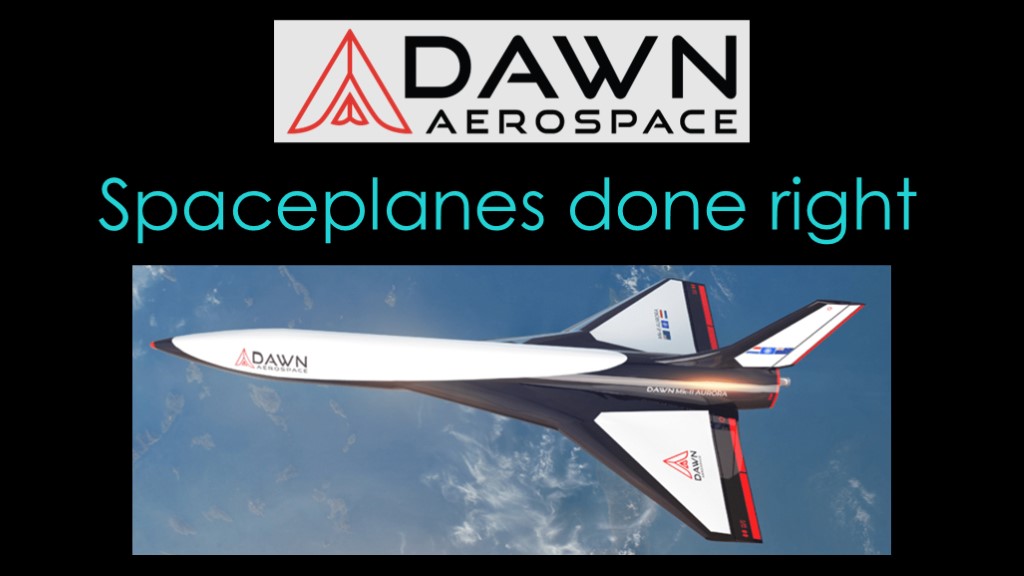
Dawn Aerospace.
Spaceplanes done right.


Spaceplanes spaceplanes spaceplanes
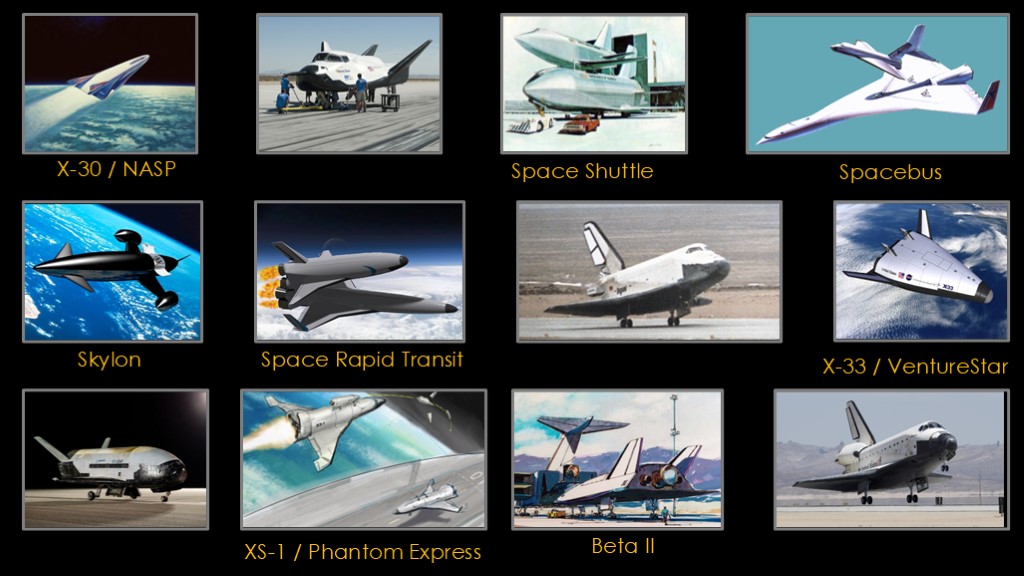
Aerospace organizations love spaceplanes. What could be better than a vehicle that flies into space and then lands like an airplane?
There are literally hundreds of different designs out there, and quite a few real projects...
There are single-stage-to-orbit projects, like the X-30 national aerospace plane that ran from 1986 to 1993, the X-33 Venture star that ran from 1994 to 2001. There's also the Skylon project that started in the 1990s - perhaps earlier and later - and is still going on, at least for small values of "under development".
Like the other single stage to orbit projects, it's unlikely to ever achieve its goals because single stage to orbit is too darn hard to do. But that's a topic for another video.
There are two stage concepts, an early space shuttle one and a later beta project one. NASA didn't have the budget for two distinct vehicles before shuttle and they certainly didn't have the money during shuttle.
There are private two-stagers, including spacebus from Bristol spaceplanes and space rapid transit from Princeton satellite systems. They also need to do two separate vehicles.
In 2013, the DARPA XS-1 program started, envisioning a two-stage to orbit approach but with an expendable second stage. Boeing's phantom express design was chosen in 2017, but after 3 years of work, Boeing decided it had "fallen out of love" with the concept and withdrew from the program.
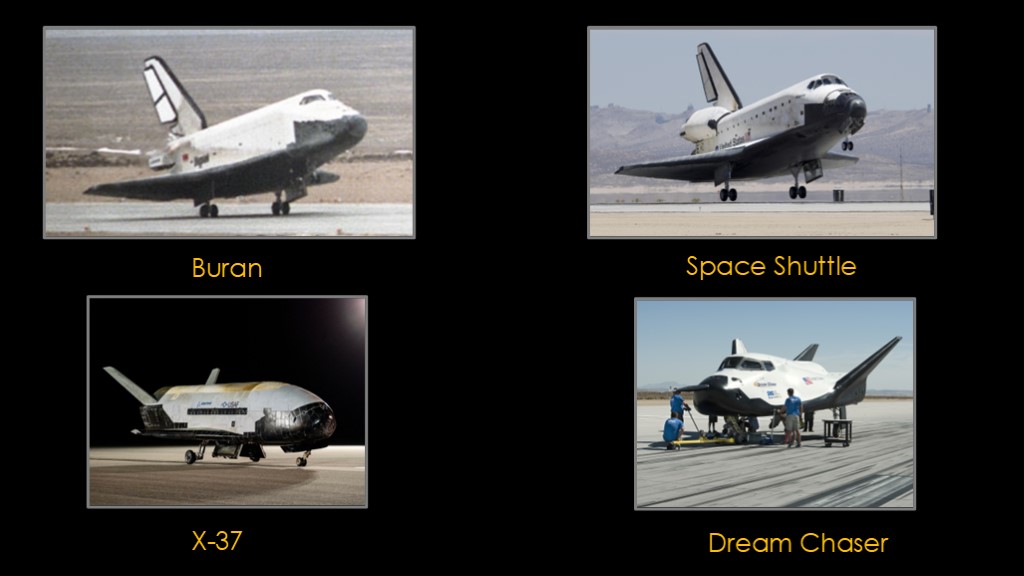
Which leaves us with four real spaceplanes, all of which are of the orbital variety.
The Russian Buran shuttle, the US Space shuttle, the boeing X-37, and the dream chaser from Sierra Nevada.
All except the space shuttle are "payload" spaceplanes that are have no boost engines and are carried into orbit on expendable boosters. The Space shuttle used its own engines to provide some of the boost to get into orbit.
And that's the world of spaceplanes. Lots of plans, lots of excitement, four vehicles, two of which are retired, one which is going to fly "real soon now", and one that has flown 6 times.
But... There is another...
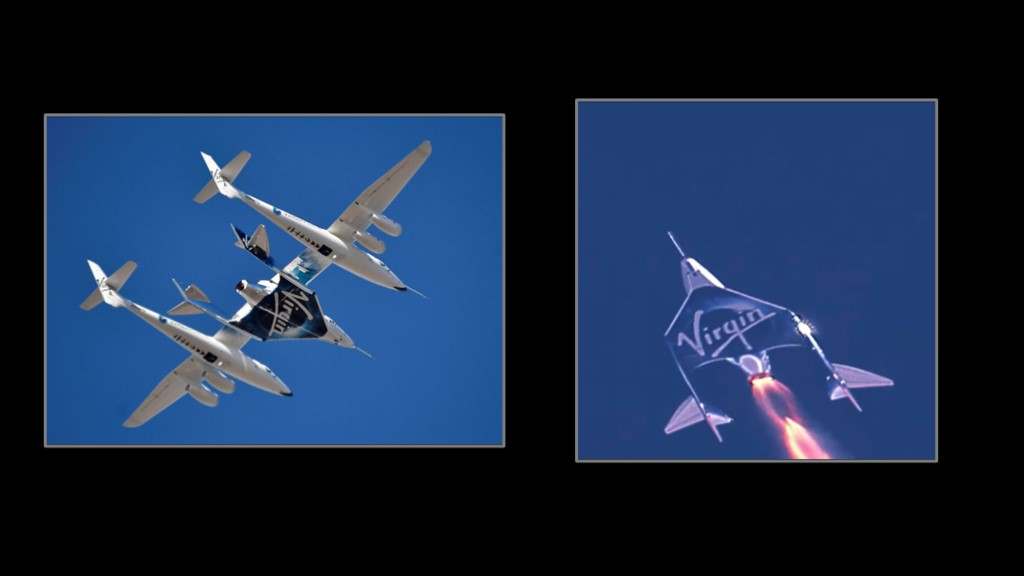
No, not this one, though it does technically qualify as a spaceplane.
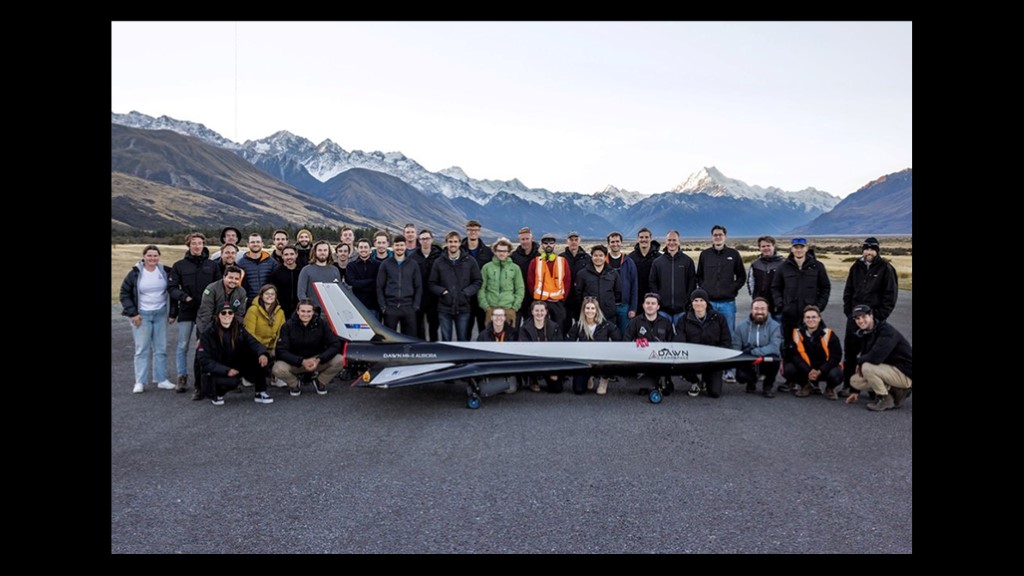
I'm talking about this prototype, and it's bigger sibling that will likely arrive in a few years...
But I'm getting a bit ahead of myself...

The most-mentioned benefit of spaceplanes is their ability to conduct "airplane-like operations". But the big barrier to launch systems is the development cost, so what matters more is airplane-like *development*.
Let's dig into that.
We know the rocket development cycle pretty well.
We start by building a launch pad. Well, actually, before we build a launch pad, we need to find a site for a launch pad, which is a long and expensive process because you need a specific kind of location plus the ability to build and launch from that location. Such locations are rare.
Now that we have a launch pad, we need to build a rocket. We're typically building our first rocket while we're building our launch pad because the launch pad takes so long.
Once we have the rocket built, we take it to our launch site. If our rocket is small enough and our launch site is accessible by truck, we'll use that. If it's large or we need to cross water, that means a ship.
Then, we need approval from a government licensing agency that our launch can be conducted safely - in the US that means an FAA launch license.
Then, finally, we fuel the rocket, fly the rocket, and collect a lot of data.
We then cycle back to building our next rocket.
The cadence between flights is pretty slow; rocket lab flew electron three times in 18 months, and that is notably faster than most companies. Everything takes a lot of time and money as these are big, handcrafted vehicles that only fly once.
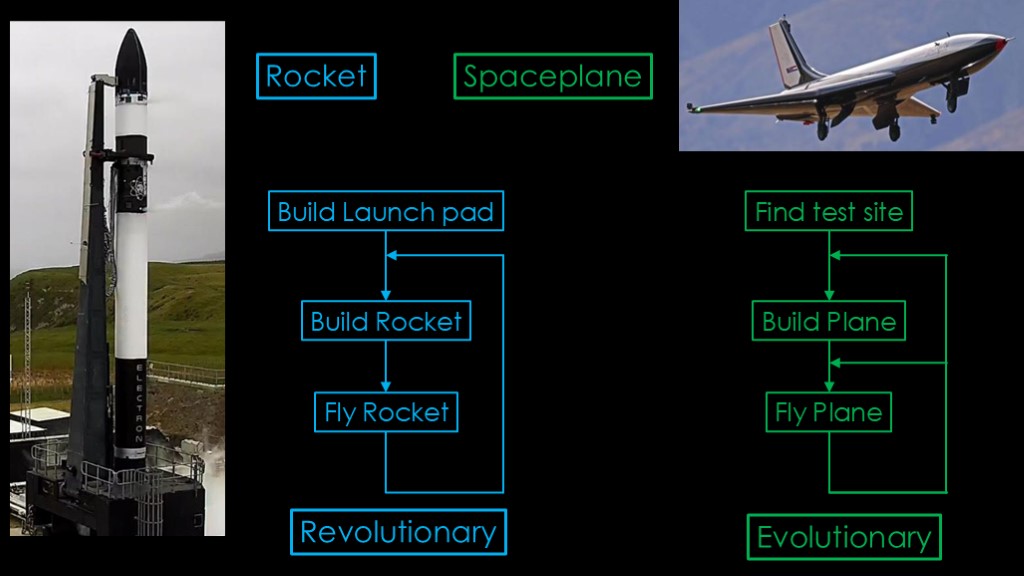
An aircraft-style development approach is very different.
You do need to find a test site, but your needs are simple - you need a runway, hanger buildings, and government approval to fly the sort of test profiles that you plan on flying.
You can't do this from busy commercial airports, but there are countless small airports across the world that might work. You will ultimately want one fairly near to an east coast so that your orbital vehicle can launch to the east over water.
You then need to build your first plane. This is going to take some time - it's a brand new vehicle and planes have a lot of systems.
Then you fly the plane. Over and over and over. You can make small changes to the hardware and software incrementally.
You can fly often if you want - daily or even several time a day. You will work your way up from taxi tests to simple flights and you will slowly expand the envelope - flying higher, flying faster, and performing more stressful maneuvers. If you have a good flight test program, you stand a decent chance of making it a long way through your program with a single vehicle.
At some point you reach the limit of what your current plane can do - you can't learn more from the current design - and you build your next, more capable plane, and fly it a lot.
I would call this approach "Evolutionary". You are taking small steps but you are taking them quickly, and you always know where you are.
I'll label the traditional rocket approach as "revolutionary". In most cases, your first launch is what is known as an "all up test" - you are trying to take a big step, all the way to orbit. Big steps are great when they work, but if they don't work, you may not have the time and money to fly again.
You can still fail with the evolutionary approach, of course.
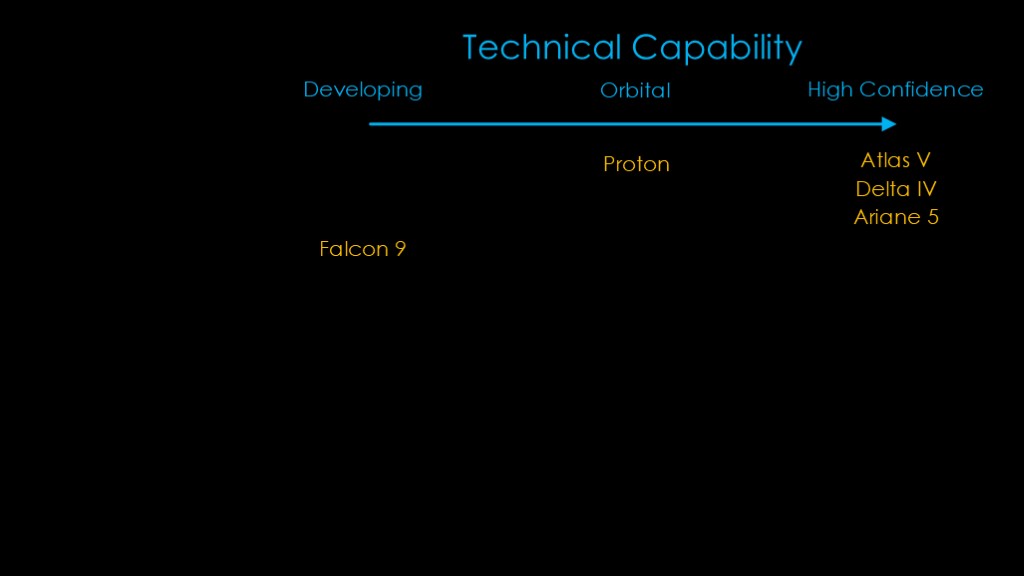
Until recently, rocket companies were interested in demonstrated technical capability. You wanted to get into the high confidence spot on the right, which was occupied by Atlas V, Delta IV, and Ariane V. Atlas V and Delta IV could command a premium because of their track record.
A rocket like Proton could still garner business without high confidence because they had a lower price.
Then Falcon 9 showed up. It pretty quickly caught up with Proton in terms of reliability, and then very soon moved to join the top 3 performers.
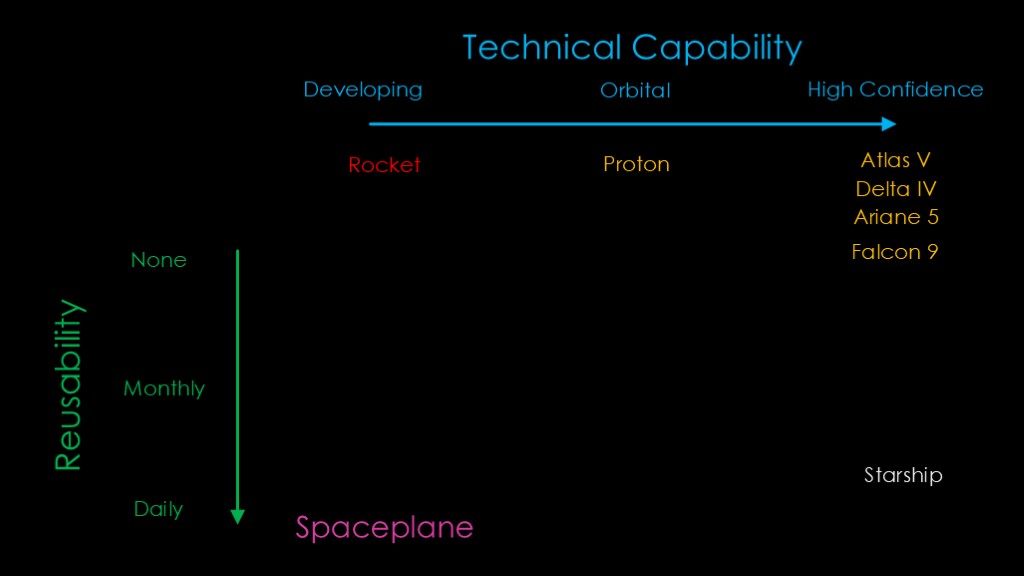
Then SpaceX added reuse into the mixture and changed the rules.
And with a ton of hard work, they have managed to get to the point where they can reuse a Falcon 9 booster on roughly a monthly basis. A huge achievement.
And there are a number of different companies hoping to repeat what SpaceX has done. Nobody has done it yet, though we will likely see some decent attempts in the next few years.
And - of course - SpaceX has aspirations for Starship to be reusable on a daily basis.
The model here is to get your rocket up and running - to demonstrate orbital consistency, if not high confidence - and then work on reusability.
But that's not the only possible approach. What if you start with a spaceplane that is reusable on a daily basis and then push towards the higher capability regime?
I'm not sure which approach is better, but I'm intrigued by organizations that attack a problem in a different way.
Which finally brings us to Dawn Aerospace.
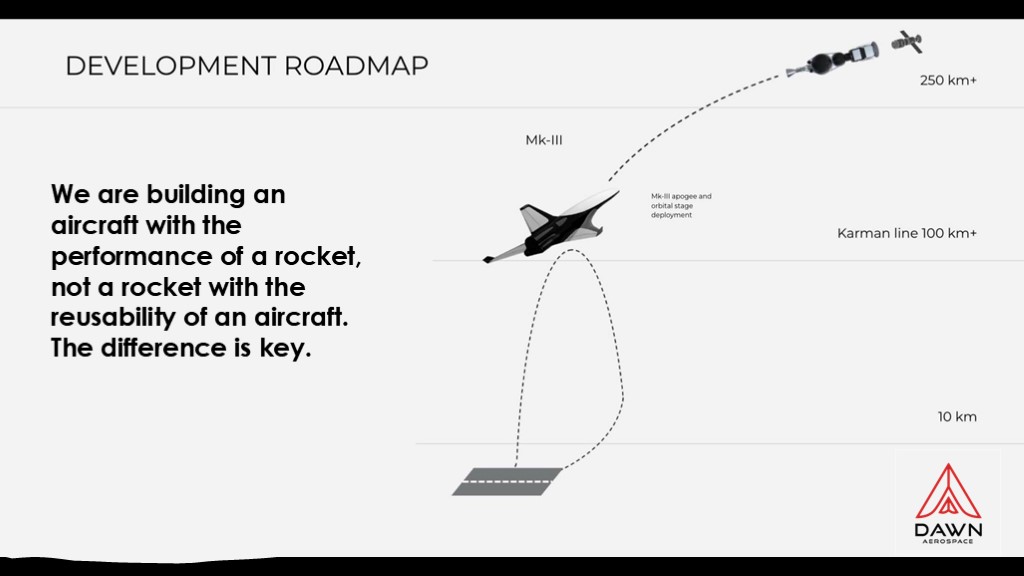
They are building an *airplane* that takes off from a runway using rocket power and flies high enough to get above the karman line and into space. Once in space, it will release an expendable second stage that puts a payload in orbit and the spaceplane will glide back to the launch site.
A first stage with "airplane reusability".
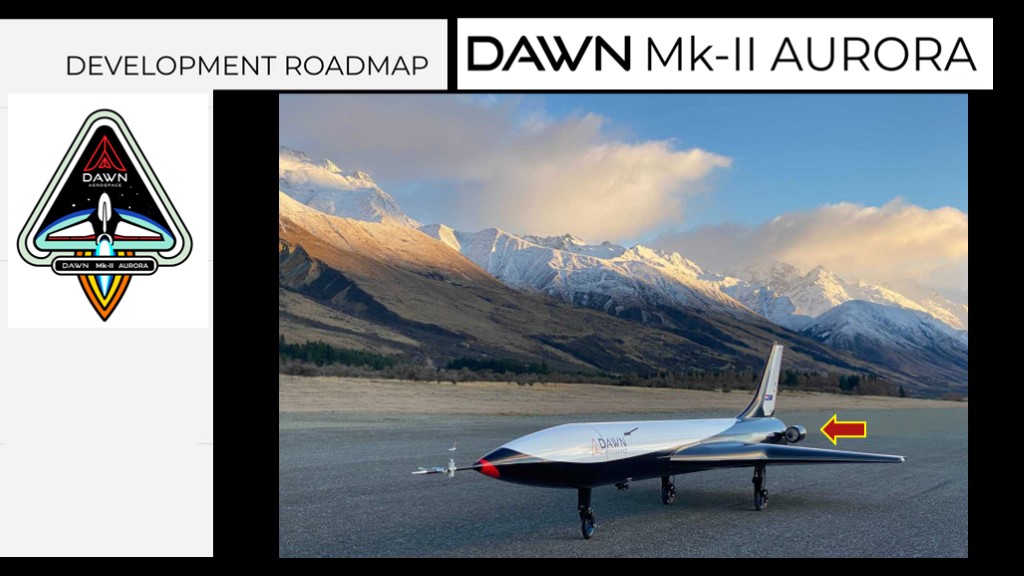
Their current vehicle is named mark 2 aurora.
Dawn Aerospace is located in New Zealand, which means that their pictures and videos have the rugged New Zealand mountains in the background.
Mark 2 is their first vehicle. Like many test vehicles, it's pretty small - 4.8 meters or 16' long, with a maximum takeoff weight of only 350 kilograms, or 770 pounds.
If you look at the rear of the vehicle, you will see two small jet engines. They elected to do phase 1 of their testing with these low thrust jet engines, allowing them to evaluate the flight characteristics of the vehicle and debug their flight software - the vehicle is remotely piloted for testing but can also fly itself.
The point of phase 1 testing with the jet engines is to understand the vehicle well enough to be ready to start testing with rockets.
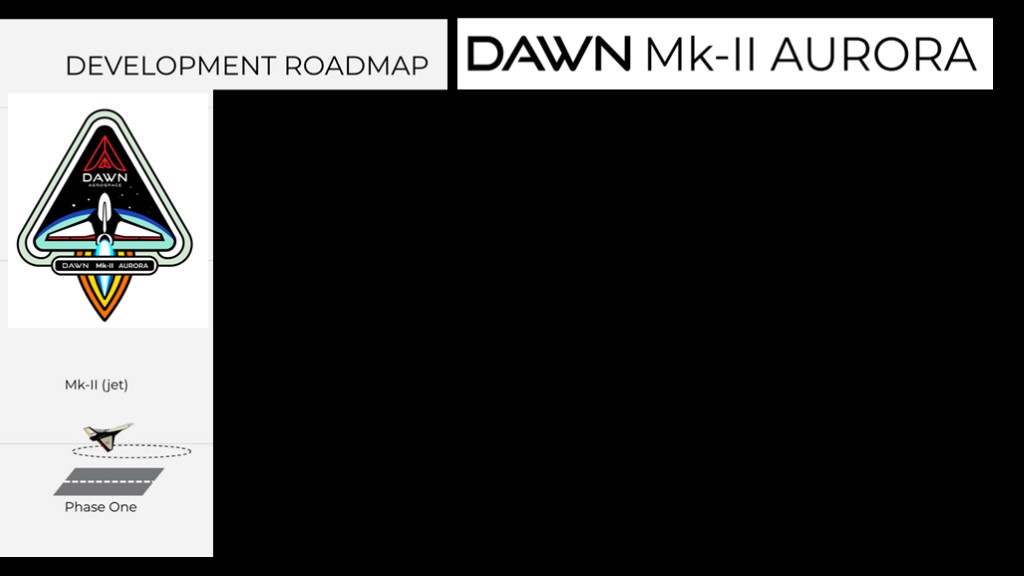
Here's a video summary of the first five flights.
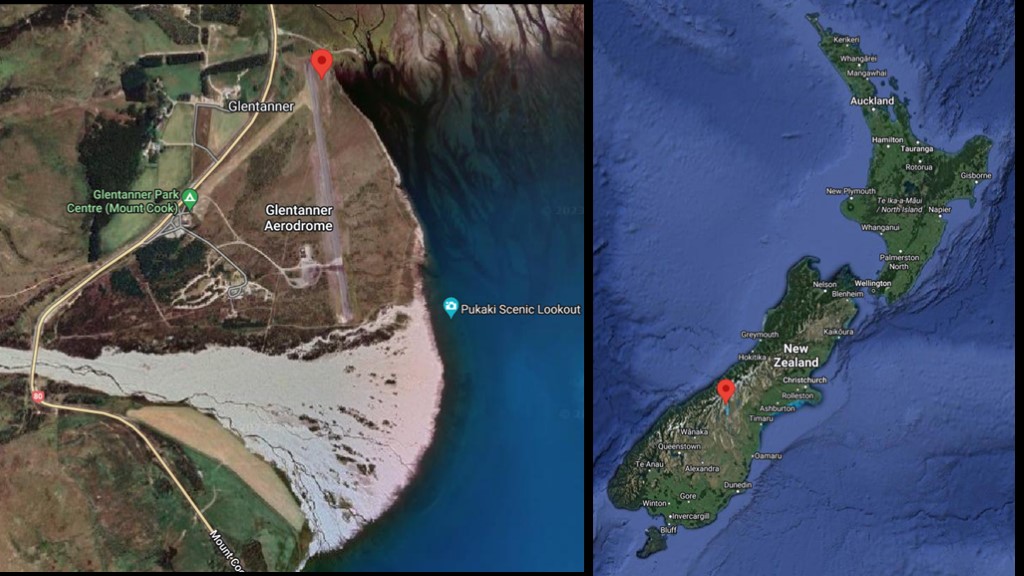
They fly out of Glentanner Aerodrome on the south island of New Zealand, right on the shores of an alpine lake.

Phase One testing has been completed.
The vehicle made 48 flights, reaching speeds of 200 knots and altitudes of 9000 feet, or 2700 meters. That was what they could achieve with the small jet engines.
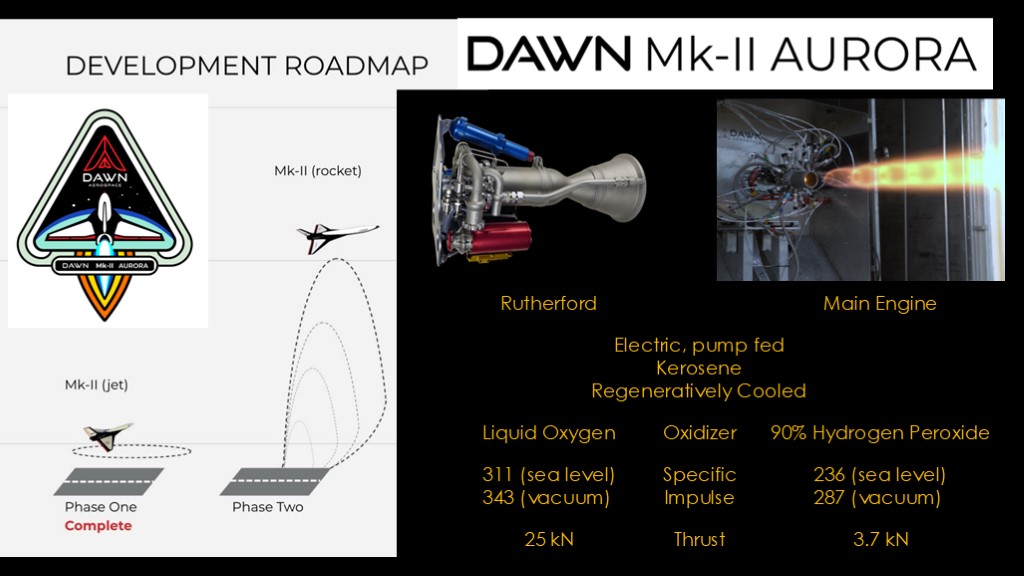
Phase 2 removes the jet engines and replaces them with a rocket engine. I've been unable to find a name for the engine other than "main engine", so that's what I'm going with.
Perhaps the best comparison for the main engine is Rocket Lab's Rutherford engine.
Both engines use electric motors to drive their propellant pumps. Both use kerosene as their fuel, though the Rutherford uses the more highly refined RP-1 version. Both are regeneratively cooled.
While the Rutherford uses liquid oxygen as an oxidizer, the main engine uses 90% hydrogen peroxide. This simplifies their world considerably as they do not have to deal with cryogenic liquid oxygen.
The downside of using hydrogen peroxide is a 20% reduction in specific impulse. They have specifically made a tradeoff that values simplified operations and higher reuse over performance.
This engine is - not surprisingly given the size of the vehicle - much smaller in thrust than the Rutherford engine.

Phase 2 is in process, using the same airframe as phase 1 and the rocket engine instead of the jet engines.
Here's the first rocket powered flight...
The first 3 flights of the rocket powered version were done in 3 days in April of 2023. They started by duplicating the tests that they had done with the jet version and will then fly higher and faster.
That is the power of airplane-like development.
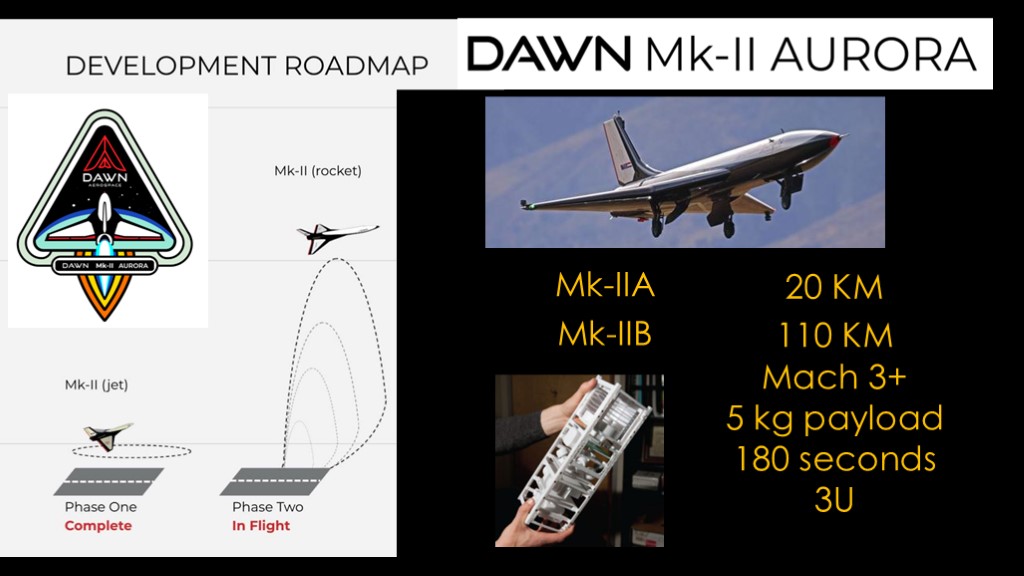
This version is known as the Mark II A - it is optimized for easy construction and testing, and can only reach 20 kilometers.
The follow-on Mark II B will have propellant tanks in the wings, a higher thrust engine, a lighter structure, and an RCS system to provide control in space. Their goal is to be able to reach an altitude of 110 kilometers and fly at Mach 3+ with a 5 kilogram payload, with larger payloads possible at lower altitudes. It will provide up to 180 seconds of microgravity.
The payload space is what is known as a "3U" volume, approximately 10 cm x 10 cm x 34 cm , or 4" x 4" x 13". This is a common size for small "cubesat" satellites.
Dawn believes that the mark IIB is commercializable, for applications such as astronomy, earth observation, in-space science, space weather, and technology development.
As a simple reusable system it could easily be better than the alternatives for many applications.

Which takes us to the larger Mark III vehicle.
There isn't a lot of information about this vehicle as it is in early development, but it is an upscaled version of the mark II that is 22 meters long and is much heavier at 23,500 kilograms.
Given what we know, we can make some guesses about how the Mark III and expendable second stage will share the work of getting to orbit.

We'll start with the delta V from the first stage. If you want to learn more about delta v, see my video "planning your solar system road trip".
Note that these are estimates, and not particularly good ones at that.
We'll assume the second stage starts up at 110 kilometers and mach 3.4. We need to figure out the delta v to get the plane to 110 kilometers and to mach 3.4.
To get to 110 kilometers, we'll start with the potential energy, which is simply the mass times the height * the acceleration from gravity. We'll ignore the fact that gravity is reduced at higher altitudes.
Plugging in some numbers, that gives us a little over 1 million kg meters squared over seconds squared, which is conveniently the definition of a joule, so it's 1.08 megajoules.
What we really want to know is that amount of energy expressed as an acceleration, and we can calculate that by treating the potential energy as if it were a kinetic energy.
The kinetic energy is one half the mass times the velocity squared. We refactor to solve for the velocity, and get velocity equal to the square root of twice the kinetic energy divided by the mass, which gives us 1470 meters per second.
The total delta v is that velocity plus the actual velocity at mach 3.4, which ends up being 1003 meters per second, for a total of 2473 meters per second - let's call it 2500 meters per second.
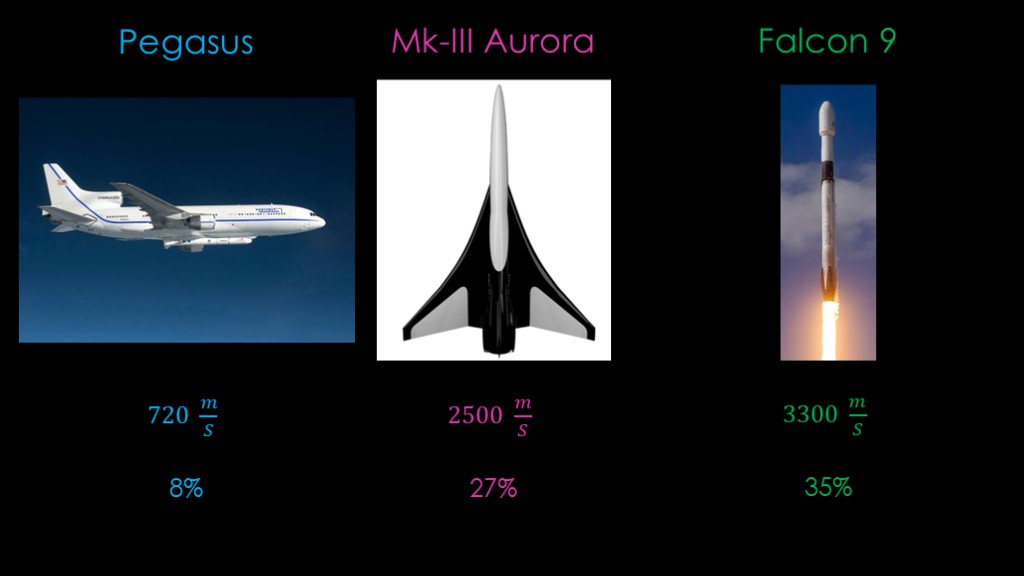
Let's do some comparisons. As we just figured out, the mark III aurora generates 2500 meters per second, which is 27% of the delta-v required to get to orbit.
An airlaunched Pegasus starts out with 720 meters per second of delta v, a bit less than 8% of the requirement to get to orbit. Launcher One from Virgin Orbit is a little less. This is a good illustration what airlaunch isn't really useful - a lot of work to only get 8% of your delta v.
The Falcon 9 on a Starlink launch stages at about 3300 meters per second of delta v, or about 35% of the requirement to get into orbit.
Note that the Mark III and Falcon 9 numbers are considerably wrong, since both had to deal with air resistance and gravity losses to get to their staging point, so the 27% and 35% are lower than the true amounts. Falcon 9 probably spends another 1100 meters per second dealing with that, so it's closer to 45% of the total. I have no idea how to calculate that gravity losses for the Mark III because it's a lifting body and that is a very different world.
So the Mark III looks to be in the right range for a first stage.

Your probably not surprised that I did some delta v estimates for both stages, but they're frankly so bad that I'm embarrassed to show them.
What I can say is that if you make a number of assumptions that I think are reasonable, the mass they give for the Mark III looks reasonable for their target payload.
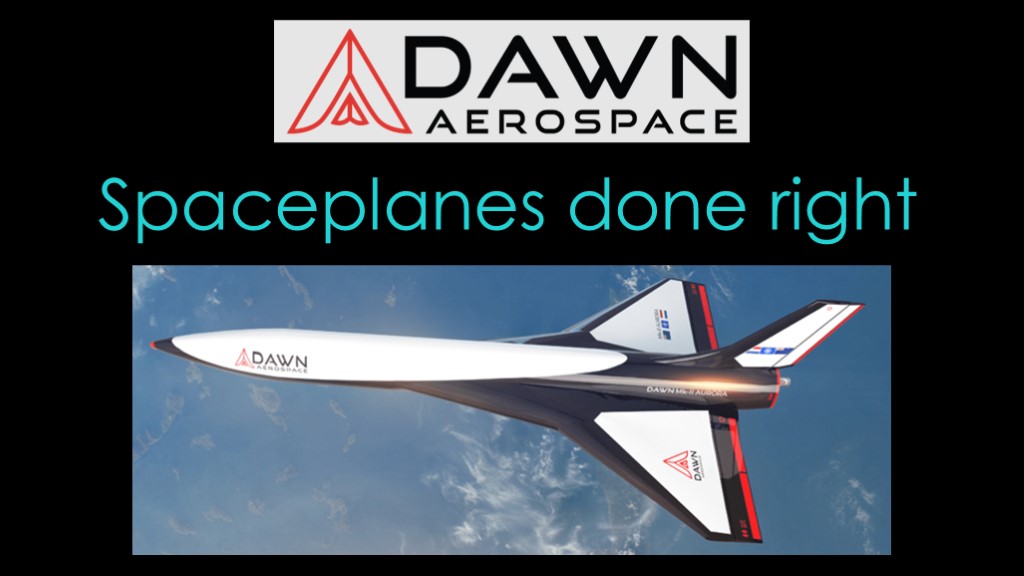
And that's the dawn aerospace spaceplane, and I hope you understand why I think they are "spaceplanes done right"...
The are using nice developmental approach and they have a decent chance of commercializing their mark II vehicle, providing some capabilities there.
Assuming they don't hit any technical difficulties or money problems, I suspect that they will be successful with Mark III.
Small satellites seem to mostly have decided that the cheap rideshare launches is a more important factor than launching when they want to launch and to a specific orbit. Electron has garnered the remainder of the small launch market and even rocket lab has decided that the market they want to be in is larger launchers.
But if there is an option that allows small payloads to fly when they want to fly and get directly to the orbit they want, that could be a very attractive option.
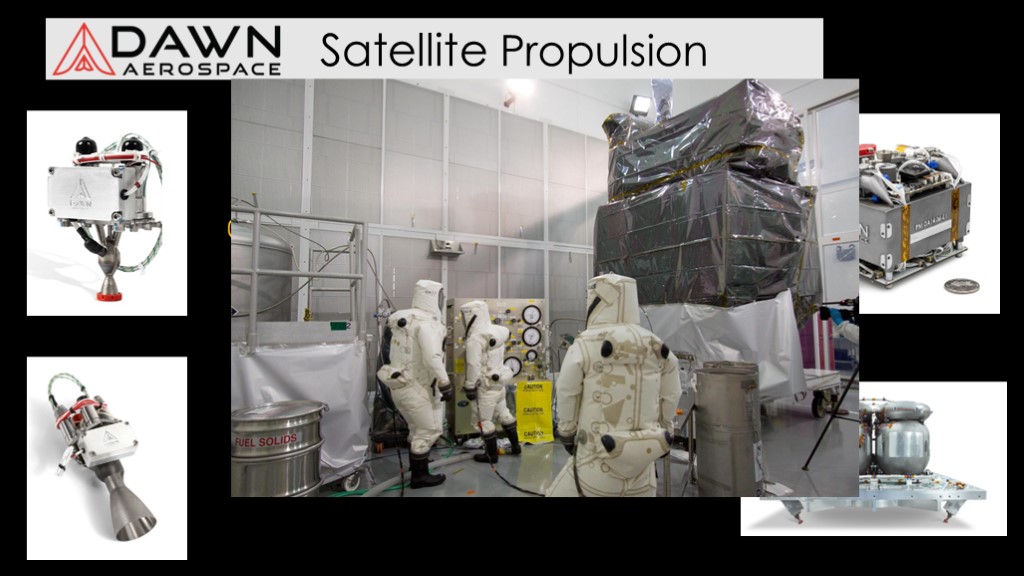
Like Rocketlab, Dawn Aerospace is not just a launch company - they also make satellite propulsion products.
Their B1 thruster puts out thrust in the 1 Newton range, and they package that into a solution for cubesats named cubedrive.
Their larger B20 thruster has a thrust in the 20 Newton range, and is packaged in their SatDrive integrated solution.
Their thrusters use nitrous oxide as the oxidizer and propylene as the fuel. These are both storable under pressure as liquids, meaning that the rest of the design is simple.
This fuel choice is around 15% less efficient than the typical hypergolic fuels, hydrazine and nitrogen tetroxide, but hydrazine is a really really nasty chemical that requires very specialized equipment, procedures, and licensing to deal with it safely...
Going with a safer but less energetic choice means a tremendous simplification in the whole operations approach, and that is especially important for cubesat builders.

And that's my overview of Dawn Aerospace.

If you enjoyed this video, learn the words to delta dawn, and tell me what, exactly, is that flower she has on?